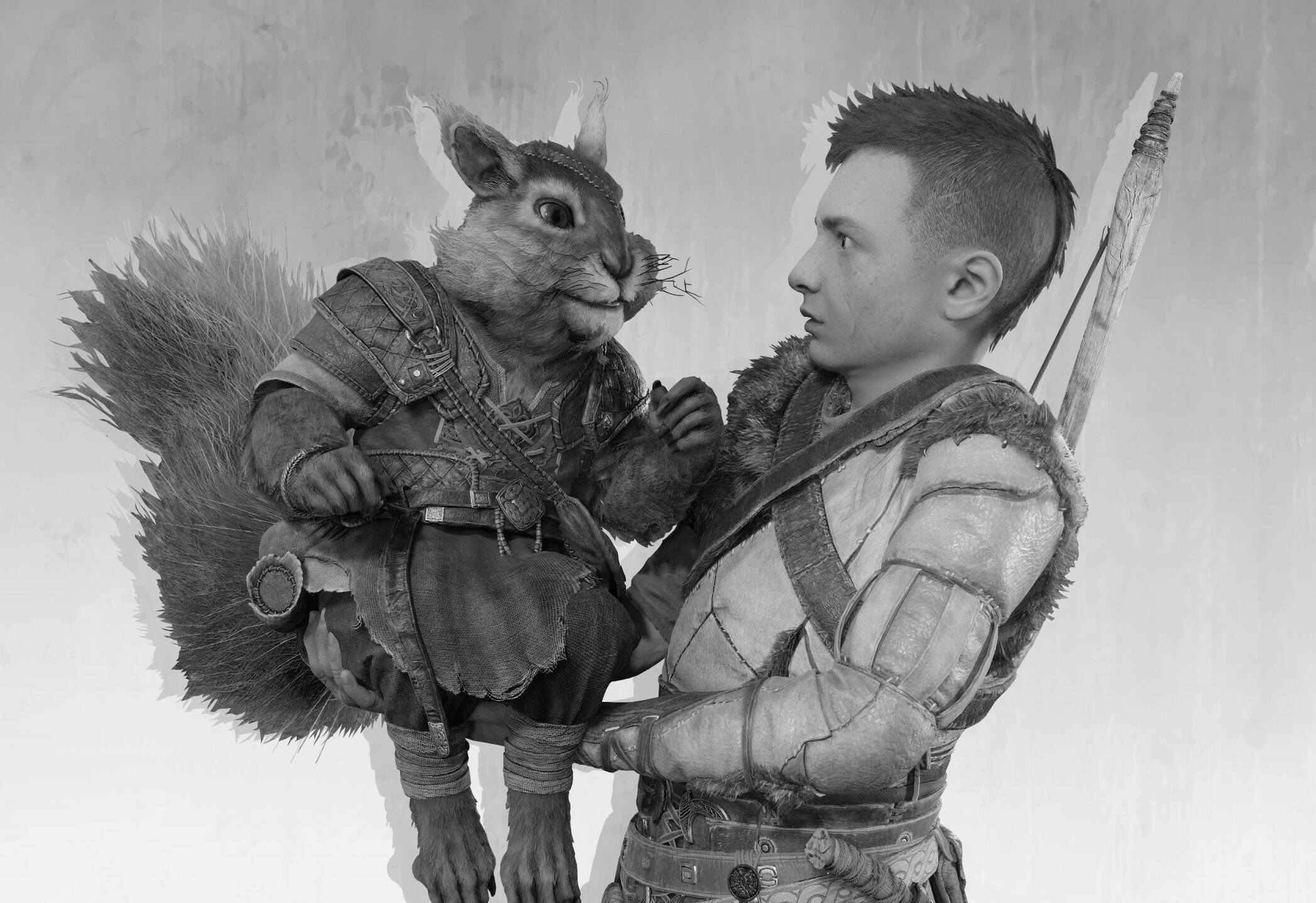
The phrase “it’s so cinematic” is thrown around constantly to compliment a game. It's shorthand for saying that a game is prestigious and expensive-looking, all because it feels like a movie. In the past decade, this has led developers of many AAA games to try and emulate more elements of cinematic visual language, yet this is sometimes done without much thought as to why it works in a movie and may not be best suited for a game. The latest example is God of War Ragnarök's new black-and-white mode, another cinematic feature in a game that aspires to cinematic greatness more than anything else.
The announcement of God of War Ragnarök's New Game Plus mode was full of expected features. There’s new gear, a new level cap, and endgame bosses — all pretty typical. There is also the introduction of a new “Black and White Render Mode” which will let players, “experience the story again with a more cinematic twist.” The mode will unlock for players who have completed one playthrough of the game.

This isn’t the first time a game has included interesting render filters. The Uncharted games from The Last of Us developer Naughty Dog, for example, have a myriad of weird filters that you can choose from during play, like 8-Bit and Cel-Shaded. However, Black and White Render Mode is the only filter the God of War Ragnarök has. It is more akin to Ghost of Tsushima’s black-and-white mode, dubbed Kurosawa Mode.
Kurosawa Mode was named after the Japanese filmmaker Akira Kurosawa, who is most famous for his samurai epics that popularized the fictional samurai ideal to a global audience. Seven Samurai, probably the most famous of Kurosawa’s films, helped define Ghost of Tsushima’s “concept of what a samurai is,” so the team at Insomniac named their black-and-white mode after the filmmaker.
It is a piece of homage (though it is a homage with lots of baggage) that makes logical sense. Ghost of Tsushima is a cinematic samurai game inspired by Kurosawa, so why not have a mode that makes it look like a Kurosawa movie? Of course, it has its flaws, but at its core it makes sense. Where it doesn’t make sense is in God of War Ragnarök.
God of War Ragnarök is already a cinematic game. The camera work is distinctively cinematic. Close, shaky cam shots zoom in on people's faces emoting with intensity abound. Most notably, Ragnarök continues the gimmick of God of War (2018) by making the entire game appear as a single “take.” This is pulled directly from prestigious movies, where the one-shot is seen as a sign of filmmaking mastery.

2006’s Children of Men (which heavily inspired The Last of Us) features an iconic one-take scene. More relevant to God of War (2018) is 2014’s Birdman, which received the Academy Award for Best Picture and was shot to appear as if it was all a single-take. The development of God of War (2018) started the same year. Since God of War (2018), games like the Dead Space remake have also used this cinematic technique.
With the obvert aspirations of God of War (2018) and Ragnarök, it isn’t shocking to see a black-and-white mode akin to Ghost of Tsushima, however, Ragnarök has no artistic justification for this. It takes a Greek man-turned-god and plants him in a realm of Norse mythology. God of War is distinctly European in that sense and not a Kurosawa-inspired game. Not that only samurai movies use black and white (shoutout to Johnny Mnemonic’s black-and-white release), but God of War Ragnarök is inspired by an entirely different type of movie, namely Disney’s MCU saga.
While God of War (2018) was a restrained story about the tense relationship between Kratos and Atreus in the wake of their wife and mother’s (respectively) passing. It was quiet and personal. Ragnarök is anything but quiet. It is a story straight out of the MCU, of people amusing allies in preparation for a large climactic fight.
It loses much of the heart of its predecessor and replaces it with uninventive banter and MCU humor in the mouth of every side character. The game has a talking squirrel. It is not the type of story that meshes with a black-and-white mode. But that isn’t what is important, what is important is that black and white equals cinematic, and Ragnarök is a cinematic game, so why shouldn’t it have a black-and-white mode?
AAA games are constantly trying to be movies, especially those made by Sony. While the actual content of games like God of War and The Last of Us feels more homogeneous than ever, they earn praise for being prestigious. They even lead to hit prestige series on HBO. But in pursuit of praise as cinema or TV, they lose their ability to be quality games. That is something that no black-and-white mode, no matter how good it might look, can't hide.







